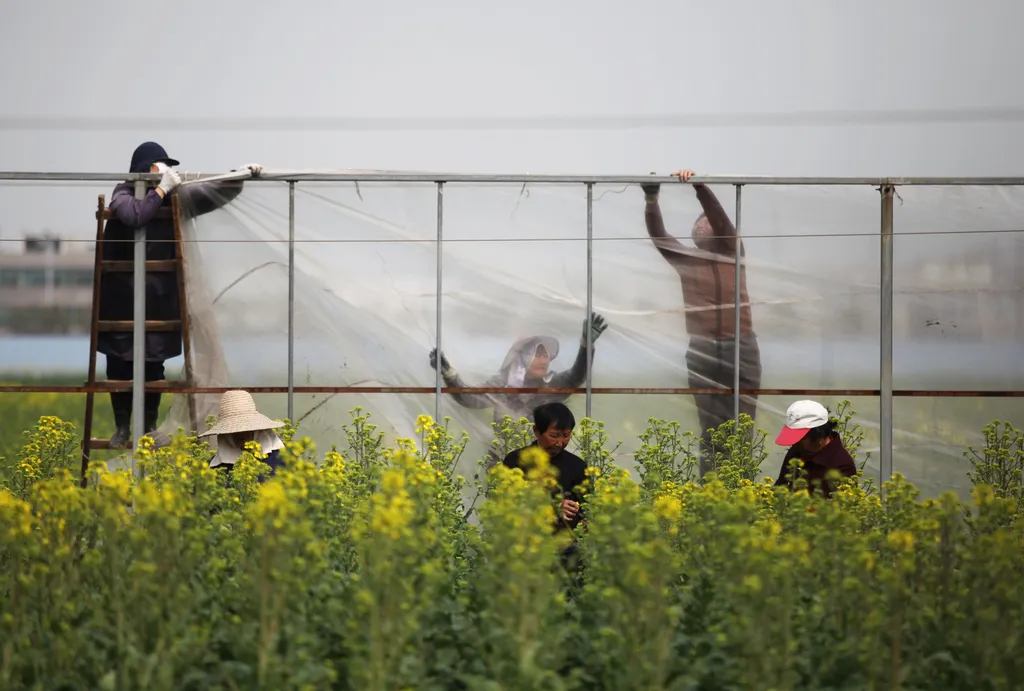In the quest to cultivate medicinal plants in challenging coastal saline soils, a team of researchers led by Jianping Sun from the Institute of Coastal Agriculture at the Hebei Academy of Agriculture and Forestry Sciences has made a significant breakthrough. Their study, published in *Scientific Reports* (translated as *Nature Research*), explores a novel approach that combines physical, chemical, and microbial strategies to improve soil health and plant growth. This research could have profound implications for sustainable agriculture and the energy sector, particularly in regions where saline soils pose a significant barrier to crop production.
The team investigated a synergistic remediation strategy using Fenlong-ridging (FR), a traditional Chinese agronomic practice, and a composite modifier (CM). By evaluating four different soil treatments—conventional tillage, FR only, CM only, and FR combined with CM (FR_CM)—they discovered that the FR_CM treatment was the most effective. This combination reduced soil electrical conductivity and bulk density by 78.38% and 29.31%, respectively, while enhancing soil nutrient content and the biomass of Isatis indigotica Fortune, a valuable medicinal plant, by 68.91–114.29% and 126.52%, respectively.
One of the most intriguing aspects of this research is its impact on the soil microbiome. The FR_CM treatment induced significant reorganization of microbial community structure at both the phylum and operational taxonomic unit (OTU) levels. It elevated microbial network parameters, including positive/negative correlation ratios, modularity, and average path length, and enriched functional taxa such as fermentation and chitinolysis. This enhancement of stress-tolerant phenotypes and suppression of potentially pathogenic phenotypes suggests a robust mechanism for improving soil health and plant resilience.
“Our findings establish a theoretical foundation and technical paradigm for microbial-mediated remediation in saline-alkali ecosystems,” said Sun. “This approach not only assists crop-to-environment adaptation strategies but also maintains sustainable medicinal plant production.”
The implications for the energy sector are particularly noteworthy. As the demand for bioenergy and biofuels continues to grow, the ability to cultivate crops in marginal lands becomes increasingly important. By improving soil health and plant growth in saline soils, this research could open up new opportunities for bioenergy production in coastal regions. Moreover, the enhanced microbial activity and nutrient cycling could lead to more efficient and sustainable agricultural practices, reducing the need for chemical inputs and minimizing environmental impact.
This research also highlights the potential for integrating traditional agronomic practices with modern scientific techniques. The use of Fenlong-ridging, a traditional Chinese practice, in combination with a composite modifier, demonstrates the value of blending old and new methods to address contemporary challenges. As Sun noted, “This work shows that by understanding and harnessing the power of microbial communities, we can develop innovative solutions to some of the most pressing issues in agriculture.”
The study published in *Scientific Reports* not only provides a roadmap for improving coastal saline soil but also offers a glimpse into the future of sustainable agriculture. By focusing on microbial-mediated remediation, this research could pave the way for more resilient and productive agricultural systems, benefiting both the environment and the energy sector. As we continue to explore the complexities of soil microbiomes and their interactions with plants, the possibilities for innovation and improvement in agriculture are vast and promising.

